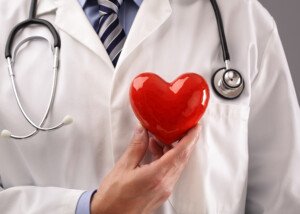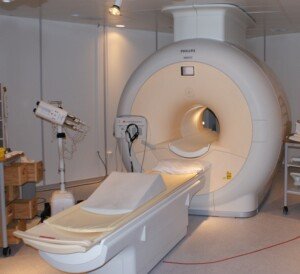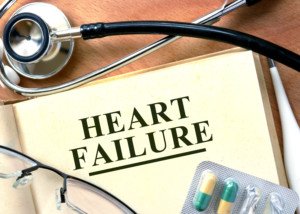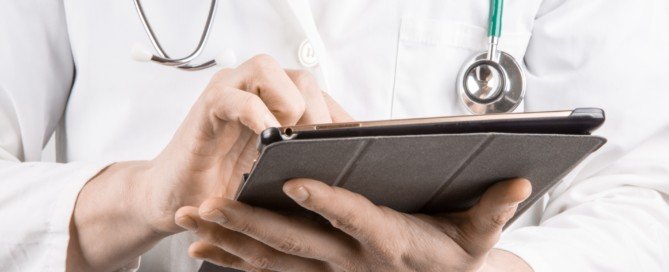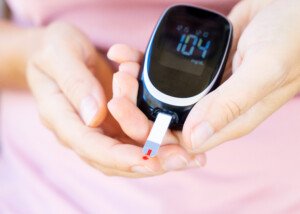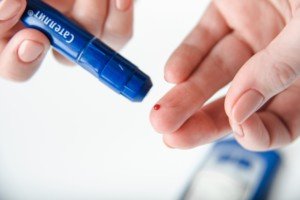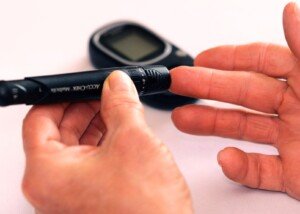Fast Resting Heart Rate Increases Death Risk from All Causes

An elevated resting heart rate is associated with an increased risk of death from all causes. This includes cardiovascular disease.
Are you familiar with what your pulse normally is when you’re at rest? If not, you’d better get familiar with it — because research shows that it’s a risk factor not to be ignored.
This is the conclusion by researchers from the Ronald O. Perelman Heart Institute at New York-Presbyterian Hospital/Weill Cornell Medical Center; over 9,000 patients were studied.
This conclusion applies to tracking resting heart rate over time.
Study authors urge doctors to track the pattern of patients’ HRs over the years, rather than relying upon a single reading.
The Study Is Something to Think About
“Based on this study, we believe that an elevated heart rate seen over a number of years is worrisome, signifying that these patients need further evaluation to see what might be causing the high heart rate,” says lead investigator and cardiologist Dr. Peter Okin in the paper.
The researches followed patients for an average of five years, and found that readings of 84 beats/minute or more were associated with a 55 percent higher risk of cardiovascular death, as well as a 79 percent higher risk of all-cause death.
Cardiovascular risk factors such as hypertension were adjusted for.
Normal RHR should be between 60 and 80 beats/minute according to some cardiologists, while others extend that range to 100 bpm.
- A 16 percent greater risk of death from cardiovascular disease, and a 25 percent increased risk of death from all causes, came with every extra 10 beats/minute greater than normal resting heart rate.
Why would an elevated resting heart rate be associated with more cardiovascular disease anyways?
Faster resting heart rate increases automatic nervous system activities, and this heightened response is connected to increased risk of atherosclerosis (plaque buildup inside arteries) and abnormal heart rhythms, as well as heart ischemia (restricted blood supply).
“Heart rate remains a significant predictor of increased mortality,” says Dr. Okin in this report.
Should you panic if your resting pulse is frequently over 80 and especially 102 or so?
Most cardiologists are not concerned if a patient’s resting pulse is between 80 and 100 — especially if that patient shows no signs of cardiac abnormality elsewhere and reports no concerning symptoms.
But what if many times when you take your pulse, it’s a little above 100 — even though you’ve been at rest for a while?
“The resting heart rate range can be deceiving,” says Yaser Elnahar, MD, a cardiologist with Hunterdon Cardiovascular Associates in NJ, whom I interviewed for this article.
Dr. Elnahar continues, “The best way to look at this data is to evaluate resting heart rates in young professional athletes (40-60 beats per minute) — since their hearts are well-trained and more efficient at pumping the same amount of blood at less work.
“In people who exercise regularly, don’t smoke and don’t consume much caffeine, I would question the hydration, weight and any other medical conditions that are causing the fast resting heart rate.”
If such an individual keeps well-hydrated, tests negative for medical conditions, is of a healthy weight, restricts caffeine and doesn’t smoke — yet STILL often has a resting heart rate on the fast side (e.g., 102 or even in the 90s), then it’s quite possible that this person has too much anxiety going on.
Leading a stressful life can keep the heart rate on the fast side for extended periods.
The patient may be a jumpy or edgy type of person who can’t really maintain calmness for too long. Something is always up, giving that person the jitters.
The complete study is in the July 2, 2010 online European Heart Journal.
 Dr. Elnahar has publications in the Journal of Atrial Fibrillation, the Journal of Clinical Medicine and Research, Reports in Medical Imaging, and more.
Dr. Elnahar has publications in the Journal of Atrial Fibrillation, the Journal of Clinical Medicine and Research, Reports in Medical Imaging, and more.
 Lorra Garrick has been covering medical, fitness and cybersecurity topics for many years, having written thousands of articles for print magazines and websites, including as a ghostwriter. She’s also a former ACE-certified personal trainer.
Lorra Garrick has been covering medical, fitness and cybersecurity topics for many years, having written thousands of articles for print magazines and websites, including as a ghostwriter. She’s also a former ACE-certified personal trainer.
.—
Top image: Freepik.com
Source: sciencedaily.com/releases/2010/08/100812151640.htm
Does High Cholesterol Mean You Should Take Statin Drugs?

If you have high cholesterol, statin drugs may come to mind as something you must necessarily take.
As to whether or not high cholesterol is an automatic green light for taking statins:
“Absolutely not! Since half the people with high cholesterol never have heart disease, we are overprescribing medications with significant costs and side effects,” explains Dr. Larry Santora, MD, a cardiologist with Orange County Heart Institute and Research Center, and author of “OC Cure for Heart Disease.”
Dr. Santora continues, “If you have high cholesterol and a zero coronary calcium scan, you can safely be treated with diet and exercise for five years.”
My brother’s coronary calcium score was not zero (he won’t reveal the number), but he did say that the score prompted him to “aggressively” treat his condition, and the treatment includes a statin.
My mother never had a coronary calcium scan; she had a catheter angiogram which revealed near-complete blockage in all major coronary arteries – she underwent quintuple bypass surgery only a few hours after the angiogram.
Immediately after, she was put on a statin and continues to take the statin today. Her cholesterol profile, pre-surgery, was poor.
It has since improved significantly, despite no change in eating habits.
Dr. Santora continues, “On the other hand, if you have normal cholesterol, but one other risk factor like diabetes, etc., you may be one of the potential heart attack victims who has normal cholesterol.
“If you get a heart scan and have plaque or calcium, being on cholesterol meds will reduce dramatically the heart attack risk.”
Risk factors for heart attack that many people cannot name are: sleep apnea, insomnia, less than six hours of sleep a night, chronic mental stress, insulin resistance or pre-diabetes, and excess belly fat even though the rest of the body is not “overweight.”
Dr. Santora adds, “The new paradigm approach for cholesterol should be: 1) This person has high cholesterol; can this patient get a heart scan and not be put on medications?
“2) This patient has normal cholesterol; should this patient be on cholesterol medications?
“The $300 or less for a scan will more than pay for the savings in medications and lives.”
Even if your insurance will cover the cost of statins, statin drugs serve up a lengthy list of possible side effects, some of which are serious (though rare).
Why would a person with normal cholesterol, but a high calcium scan score, be put on a statin?
Because statins are also designed to slow the progression of coronary plaque buildup.
Many natural supplements have the same cholesterol-lowering effects of statins, such as vitamin B3 (niacin), plant sterols, aged garlic extract, fish oil, green tea extract and turmeric.
Exercise also has the same effect, especially intense exercise.

Dr. Santora’s areas of interest include interventional cardiology – coronary stenting; cardiac CT – CT angiography, and coronary calcium screening with EBCT. He is board certified in cardiovascular disease and internal medicine.
 Lorra Garrick has been covering medical, fitness and cybersecurity topics for many years, having written thousands of articles for print magazines and websites, including as a ghostwriter. She’s also a former ACE-certified personal trainer.
Lorra Garrick has been covering medical, fitness and cybersecurity topics for many years, having written thousands of articles for print magazines and websites, including as a ghostwriter. She’s also a former ACE-certified personal trainer.
What Happens During an MRA? Patient Describes Procedure
You know what an MRA is, but what exactly happens during an MRA – here is my firsthand account.
I had an MRA – no, not MRI, but MRA, as in magnetic resonance angiogram.
An MRA is a type of MRI, actually.
Perhaps your doctor has told you that you should have an MRA.
Or maybe you’ve already made the appointment for the magnetic resonance angiogram.
There are many reasons to have an MRA, and just because your doctor has ordered this procedure, doesn’t mean it will find something wrong with you.
What’s an MRA like?
After filling in the paperwork, you’ll wait.
The technician who did my procedure was the person who came into the waiting room to summon me.
I was led to a room and told to slip into two gowns (I don’t remember the reason why two were necessary, but it made sense at the time).
I then waited in an area for people waiting to get an IV portal inserted into their arm for the contrast dye.
What happens during an MRA?
The procedure uses contrast dye to make the blood vessels visible. So I waited briefly, then was called into a room where a nurse prepped me for the IV portal.
Then I was sent back to the little waiting room.
The technician then summoned me. I had asked for a chance to speak to the cardiologist who’d be present.
I was also told I couldn’t wear earplugs (magnetic resonance procedures produce loud noise) because I had to wear headphones to be able to communicate with the technician during the exam.
I briefly spoke to the cardiologist, and then was taken to the MRA room.
I lied on the table. The technician placed some heart monitor leads on my chest.
I had been told that during the procedure I’d be having to hold my breath, usually for 20 seconds at a time.
The technician placed a thick, weighty rectangular-shaped thing on top of my chest, and did something with the IV portal, though she did not inject the dye.
The dye is injected from another room. I don’t know how this works, but after I had lied on the table, she had rigged something with the IV portal, while I was lying flat with my eyes closed.
I was told the test would take an hour, more likely an hour and 15 minutes.
A little hand pump was placed in my other hand and I was told that if I needed to be taken out of the MR tube, to squeeze the pump.
The MRA was of my heart (I’ll get to the reason in a moment), so my head was completely in the tube.
Many times I was told (through the headphones by the tech) to “Inhale, exhale, now take a deep breath and hold.” Then she’d say, “Breathe.”
This pretty much defined the experience, though there were several points during which she told me to relax for a few minutes while she made adjustments from the other room.
Believe it or not, only the last few minutes of the procedure involved the contrast dye.
She alerted me when she was giving it to me (while I was still inside the tube). I had no reaction to it. Next thing I knew, the exam was done.
Why did I have the MRA? I had had a visit with a cardiologist as part of heart disease screening (both parents have heart disease).
He detected a Class II heart murmur. The subsequent echocardiogram was normal, so the only thing he could think of that was causing the murmur was pulmonary stenosis (narrowing of pulmonary artery). A magnetic resonance angiogram would detect this.
In my case, the MRA turned out completely normal, and my cardiologist has concluded that the murmur is a “functional flow” type which can develop in athletes (of which I am). It is harmless.
I had my next routine screening two years later, and the cardiologist said, “You have the smallest heart murmur in the world. I don’t hear it.”
 Lorra Garrick has been covering medical, fitness and cybersecurity topics for many years, having written thousands of articles for print magazines and websites, including as a ghostwriter. She’s also a former ACE-certified personal trainer.
Lorra Garrick has been covering medical, fitness and cybersecurity topics for many years, having written thousands of articles for print magazines and websites, including as a ghostwriter. She’s also a former ACE-certified personal trainer.
.
Top image: MRI Jan Ainali, CC
The Insulin Resistance Connection to Juices and Fruits

Can drinking huge amounts of juice daily lead to insulin resistance?
Are you a big juice drinker and wondering if this might cause insulin resistance, a harbinger of type 2 diabetes?
We grow up hearing how good juice is for us, and though juice contains antioxidants, it also contains sugar in the form of fructose. This is natural sugar.
However, there’s a problem here. Fructose, when eaten in its natural state — with whole fruit — gets metabolized nicely by the body, namely because the fruit’s fiber slows the absorption of this sugar.
Juice is minus most, if not all that fiber, so now we have fructose being consumed in its unnatural state.
Instead of it going to the muscles for energy, it goes to the liver. Enough sugar going to the liver can result in problems, such as “fatty liver.”
So then, can drinking a lot of juice cause insulin resistance or a prediabetic state?
“Too many calories can cause insulin resistance, whether from fruit, fruit juice or other foods,” says Craig Stump, former chief of the UA Division of Endocrinology, Diabetes and Metabolism (2006 to 2016), University of Arizona, Southern Arizona VA Healthcare System.
Dr. Stump continues, Fruit juices do tend to be calorically dense (i.e., it is easy to add a fair number of calories to the diet by drinking too much).
“In our clinics for obese children and adolescents we ask them to abstain from all caloric beverages in an attempt to reduce overall caloric intake.”
This also depends on the kind of fruit juice. Some fruit juices are naturally lower in sugar than others.
For example, an eight ounce glass of juice extracted from fresh blueberries does not contain as much sugar as an eight ounce glass of juice extracted from oranges.
On the other hand, watch out for juices that come in bottles, as oftentimes, these have added sugars.
Stay away from juices that are marketed towards “moms” of young kids; these often contain artificial colors and other synthetic chemicals.
Dr. Stump says, “I think huge repeated spikes in sugar (juice, soda, Gatorade, etc.) and corresponding large spikes in insulin could contribute to insulin resistance.
“However, insulin resistance is not a straightforward diagnosis in people who are not injecting insulin.
“It can be estimated with a HOMA (fasting insulin and glucose measure) or an oral glucose tolerance test, but these are not perfect in an individual patient (better for looking at larger groups of individuals).
“A high triglyceride and low HDL can also provide evidence for insulin resistance.
“It can only be quantified with certainty in the laboratory with a euglycemic-hyperinsulinemic clamp procedure (not done clinically).”
When you hear about the epidemic of prediabetes among America’s kids, these are kids who are sedentary, overweight and often have a poor cholesterol profile.
They may be drinking lots of juice, but along with the juice, plenty of sugary sodas, ice cream, cookies and candy.
A healthy active adult should feel free to drink juice, but make it organic with no sugar added.
Optimally, juice fruit at home to ensure that you are getting a 100 percent natural beverage.
But don’t go crazy with juice consumption, as it does indeed cause significant blood sugar spikes (fructose is rapidly absorbed into the bloodstream, causing the pancreas to go overboard pumping out insulin to lower the blood sugar level.
If this pattern occurs often enough, the pancreas becomes overworked and your body’s cells may become less efficient at utilizing the sugar that the insulin brings to them for energy. This is how insulin resistance develops.)
The healthiest way to consume juice is in solid form: in the form of fruit, to get the fiber that goes with it.
And no, taking a fiber pill with a liter of juice won’t cut it.
Restricting simple carbohydrates (i.e., eat apples instead of apple juice; whole-grain bread instead of white; wild rice instead of white), plus rigorous exercise and weight control, will go a remarkable way in preventing insulin resistance.
Dr. Stump’s research interests included insulin resistance resulting from physical inactivity, obesity and the metabolic syndrome, and identifying biological markers to predict progression of diabetes. Dr. Stump passed away in May 2019 after a brief illness.
research interests included insulin resistance resulting from physical inactivity, obesity and the metabolic syndrome, and identifying biological markers to predict progression of diabetes. Dr. Stump passed away in May 2019 after a brief illness.
 Lorra Garrick has been covering medical, fitness and cybersecurity topics for many years, having written thousands of articles for print magazines and websites, including as a ghostwriter. She’s also a former ACE-certified personal trainer.
Lorra Garrick has been covering medical, fitness and cybersecurity topics for many years, having written thousands of articles for print magazines and websites, including as a ghostwriter. She’s also a former ACE-certified personal trainer.
19 Questions to Ask Your Shoulder Arthroscopy Surgeon

Have these 19 shoulder arthroscopy questions ready for your surgeon.
Don’t wait until the day of your shoulder arthroscopy to ask these crucial questions to the surgeon.
If you’re suffering from shoulder pain and have decided to see a “shoulder doctor,” take these questions with you just in case the doctor says you might need an operation.
It is not impossible for a doctor to tell a patient that an operation might be needed, even though the patient has not had any imaging tests of the shoulder.
Someone I know was told by a doctor that he might need knee arthroscopy or a total knee replacement, even though no imaging tests had been done on his knee.
Now, suppose you’ve had an MRI of your painful shoulder and the report says you have tears in the tendons.
There’s a chance that you’ll need arthroscopy of your shoulder; so when you see the orthopedic doctor, be prepared.
He might say you need shoulder arthroscopy, so bring the list of questions below, which were prepared by Edmond Cleeman, MD, a board certified orthopedic surgeon who specializes in sports medicine and arthroscopic surgery of the shoulder, knee and hip.
Preliminary Questions to Ask Surgeon About Shoulder Arthroscopy

Shutterstock/Rocketclips, Inc.
1. Ask the doctor about his/her experience with this procedure (do they perform 10/yr or 100/yr).
2. Ask about alternatives to surgical treatment (i.e., activity modification, medications, physical therapy, steroid injection, PRP injection, etc.)
3. Is there a downside to postponing surgery? For example, a rotator cuff tear left untreated over time will enlarge, retract, scar, atrophy, and eventually become irreparable. On the other hand, a labrum tear may do well without surgery.
4. Ask the doctor to draw a picture of the problem (i.e., torn RC) and a picture of how it is repaired.
I found this tremendously helpful for patients to better comprehend the problem.
6. Ask the doctor for a reputable website to get more info (lots of misinformation out there).
I often refer my patients to the AAOS (American Academy of Orthopedic Surgery) website – has accurate info.
7. Is the operation covered? Make sure the doctor’s office gets preauthorization from insurance company. Does the hospital and anesthesia accept your insurance?
Final questions to ask surgeon regarding arthroscopic surgery of shoulder:
1. What are the risks of surgery?
2. What are the success rates for the procedure? In biology and medicine there is no such thing as 100% success (does not mean that a nonsuccessful outcome equals a complication or mistake).
3. What is the patient’s expectations (important question for the doctor to ask: Surgery may reduce almost all pain but maybe the patient can’t throw the ball as hard as before the injury).
4. What kind of anesthesia (regional block – numb up the arm or general anesthesia)?
5. Can patient go home same day or is overnight stay necessary?
6. How much pain will there be post-op? What kind of medication needed?
After RC surgery there is significant pain, especially at night. Get pain prescription prior to surgery date so it can be filled.
7. Will a sling be necessary and for how long?
8. Return to work? Return to sport?
Preop questions to ask surgeon regarding arthroscopic shoulder surgery:
1. Ask if need to stop certain meds (i.e., aspirin and other blood thinners).
2. When to stop eating (usually midnight)?
3. Should someone accompany you home?
4. Where to go and at what time?
 Dr. Cleeman is a highly experienced orthopedic surgeon and sports medicine specialist at Manhattan Orthopedics. He is committed to performing advanced minimally invasive procedures, allowing his patients to go home the same day.
Dr. Cleeman is a highly experienced orthopedic surgeon and sports medicine specialist at Manhattan Orthopedics. He is committed to performing advanced minimally invasive procedures, allowing his patients to go home the same day.
 Lorra Garrick is a former personal trainer certified through the American Council on Exercise. At Bally Total Fitness she trained women and men of all ages for fat loss, muscle building, fitness and improved health.
Lorra Garrick is a former personal trainer certified through the American Council on Exercise. At Bally Total Fitness she trained women and men of all ages for fat loss, muscle building, fitness and improved health.
Will a Failed Knee Replacement Worsen if Not Revised?
Find out what likely will happen with your knee if you don’t have revision surgery for a failed total replacement.
You’ve had a total knee replacement and, over time, things have gotten worse, leading to a diagnosis of a failed implant.
You’re told you’ll need “revision” surgery: a replacement of some or even all of the hardware.
Suppose you’re afraid to undergo revision surgery for a loosened knee replacement and are wondering if the situation will simply stabilize over time and be managed with painkillers, cold packs, gentle exercise, acupuncture, etc.
There’s bad news if you’ve been hoping that your failed total knee replacement will magically stop getting worse.
For this article I asked a hip and knee replacement surgeon if a failed TKR will necessarily continue getting worse and worse, rather than stop declining and taper off to a standstill status.
“‘Yes; as time goes on, the loosened implants lead to more bone destruction around the joint, and lead to an increased risk of fracture around the joint replacement,” says Jeffrey A. Geller, MD, Associate Chief, Division of Hip & Knee Reconstruction; Director, Minimally Invasive Hip & Knee Replacements, Columbia University Medical Center, New York, NY.
“Pain worsens, but the bone around the replacement weakens, making likelihood of fracture higher as time goes on,” continues Dr. Geller. “Typically the pain worsens and walking becomes more difficult.”
If you’ve been diagnosed with loosened knee replacements, it’s not an issue of whether or not you should undergo the revision surgery; it’s an issue of when, unless you have concurrent medical conditions that contraindicate the revision surgery.
You have to decide if you can continue living in pain, or take that chance with the revision procedure.
My father’s failed TKR generated so much pain that he had no problem deciding on the revision surgery, which so far, has been going well.
How successful is revision surgery?
Dr. Geller explains, “Patients feel much more stable and sturdy just about immediately.
“The recovery is similar to a regular total knee replacement, i.e., three months or so, but the difference is readily apparent.
“If a patient is quite aged, depends on medical comorbidities….better to fix it rather than subject patient to heavy-duty pain meds or risk of falling from pain and weakness in the knee.
“It is generally safer to try to intervene electively for the knee than do an urgent surgery for a fractured wrist or hip.”
 Dr. Geller specializes in arthritic disorders of the hip and knee. He has extensive training in joint replacements and performs surgery using some of the latest, most advanced minimally invasive techniques.
Dr. Geller specializes in arthritic disorders of the hip and knee. He has extensive training in joint replacements and performs surgery using some of the latest, most advanced minimally invasive techniques.
 Lorra Garrick has been covering medical, fitness and cybersecurity topics for many years, having written thousands of articles for print magazines and websites, including as a ghostwriter. She’s also a former ACE-certified personal trainer.
Lorra Garrick has been covering medical, fitness and cybersecurity topics for many years, having written thousands of articles for print magazines and websites, including as a ghostwriter. She’s also a former ACE-certified personal trainer.
.
Top image: Shutterstock/DeepMeaning
Does Insulin Resistance Always Make You Gain Weight?
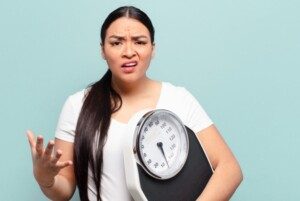
Will insulin resistance make you gain weight?
It’s easy to conclude that insulin resistance will lead to weight gain.
Insulin resistance is when the body’s cells no longer utilize this hormone efficiently, resulting in blood sugar levels that are higher than normal, but not high enough to be considered diabetes.
Insulin resistance is a precursor to prediabetes. Either the insulin receptors on cells start shutting down, and/or the pancreas fails to produce adequate amounts of insulin.
This hormone is necessary for shuttling sugar out of the blood and to the cells so that the cells can use the sugar for energy.
When glucose metabolism becomes impaired, it’s easy to see why fatigue can be a symptom of insulin resistance.
With insulin resistance, excess sugar ends up in the blood. This sugar then goes to the liver, where it is converted to fat.
This fat then ends up in the bloodstream and circulates throughout the body — and hence, the possible weight gain associated with insulin resistance.
However, weight gain doesn’t have to be the outcome, says Dr. David Edelson, MD, board certified in internal and bariatric medicine, one of the top obesity experts in the U.S., and founder and medical director for thin-site.com and HealthBridge.
Dr. Edelson explains, “With good lifestyles, a diet low in high-glycemic carbohydrates and inflammatory fats, lots of exercise, good sleep patterns, high intake of omega-3 fats (fish oils, nuts, olive and olive oils, fatty fishes, avocados), supplements of chromium, vitamin D and cinnamon (a great insulin sensitizer), there is no need to have weight gain.
“It’s just that people with insulin resistance need to be that much more vigilant about keeping their lifestyles on track than those without.”
The best time to eat a high carbohydrate meal, if you must have a high carb meal, is within one hour of vigorous exercise, when glucose metabolism is most efficient. Don’t eat a lot of carbohydrates close to bedtime.
Another good time to eat a lot of carbs is before exercise, but this may impair your session, depending on how much you eat and what kind of exercise you intend on doing.
You don’t want to be having to hop off the treadmill every 10 minutes to use the restroom, for instance.
To burn carbohydrates and fat most efficiently, perform intense exercise sessions at least three times a week.

Shutterstock/Dmitry Kalinovsky
This means high intensity interval training, strenuous weight workouts and other rigorous aerobic activity.
The more intensely you exercise, the faster your resting metabolism will be and the more fat your body will burn at rest, including while you sleep!
Good sleep patterns, like Dr. Edelson says, will help a person with insulin resistance avoid weight gain.

Sleeping less than seven hours a night, and more than nine, has been associated with weight gain.
Plus, disrupted sleep has been associated with insulin resistance (Spiegel, et al).
To avoid weight gain if you are insulin resistant, pay strict attention to what you eat, not just when.
In addition to eating “good” fats, restricting “fast-acting carbs” and saturated fats, and avoiding trans fats, aim for 25-35 grams of fiber a day, and eat protein with your carbs to slow their absorption into the bloodstream.
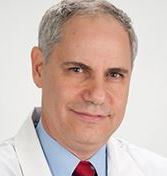
Dr. Edelson is widely recognized as one of the nation’s top weight loss experts, and was listed in NY Magazine’s “Best Doctors of 2014” issue.
 Lorra Garrick is a former personal trainer certified by the American Council on Exercise. At Bally Total Fitness she trained clients of all ages for fat loss, muscle building, fitness and improved health.
Lorra Garrick is a former personal trainer certified by the American Council on Exercise. At Bally Total Fitness she trained clients of all ages for fat loss, muscle building, fitness and improved health.
Top image: Freepik.com
www.thin-site.com and www.healthbridgeinfo.com
Can Lifting Weights Fight Off Insulin Resistance?

One more reason to lift weights is that it will prove a mighty defense against insulin resistance.
And you do not want insulin resistance. This is a precursor to type 2 diabetes. Normal fasting blood sugar (glucose) numbers range from 60 to 99.
In insulin resistance, which is a true harbinger of type 2 diabetes, the range is 100 to 124. Diabetes is over 124.
What is insulin resistance?
It’s when the insulin receptor sites on muscle cells aren’t very efficient at receiving blood sugar that’s delivered to them via insulin.
The receptor sites “resist” the attempt of the insulin to give them the muscle cell’s fuel source: sugar.
Hence, the level of sugar in the blood rises into an undesirable range.
Exercise lowers the risk for insulin resistance.
But research doesn’t just confirm that greater muscle mass lowers the risk of developing insulin resistance, but it also shows a positive relationship between sensitivity to insulin (the more sensitive, the better), and amount of muscle mass (relative to body size).
“Insulin resistance in the muscles is most linked to two things: 1) having less muscle mass, and 2) being at capacity for storage of carbohydrates in the muscles as glycogen,” explains Sheri Colberg, PhD, Professor Emerita, Exercise Science, Old Dominion University, founder of Diabetes Motion, and one of the world’s leading experts on diabetes and exercise.
“Aging by itself can lead to loss of muscle mass over time, and physical inactivity additionally contributes to such losses.
“To enhance insulin sensitivity, it is important to gain or retain muscle and use up some of the glycogen stored there.
“In other words, it’s like the muscle is a carbohydrate gas tank: You want to have as large a tank as possible and always try to keep it partway empty with regular physical training.”
Lifting weights increases lean muscle mass. Strength training is certainly a potent agent in lowering the risk of prediabetes or insulin resistance.
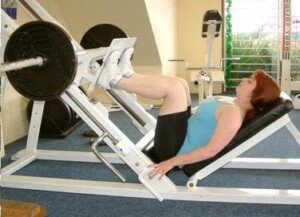
George Stepanek, CreativeCommons
The study, reported in the July 2011 Journal of Clinical Endocrinology & Metabolism, states that the greater the muscle mass in a person, the lower that individual’s risk of having the precursor to type 2 diabetes: insulin resistance.
Think of insulin, a hormone, as a wagon that carts glucose (blood sugar) to the receptors on the muscle cells.
The receptors are supposed to welcome the wagon with open arms. This is healthy glucose metabolism. Exercise, including lifting weights, will enhance this process.
The study “suggests a role for maintaining fitness and building muscle,” says the study’s lead author, Preethi Srikanthan, MD, in the paper.
If you’re overweight and have found it nearly impossible to lose weight or keep lost weight off, you now know that there is something you can do to help prevent prediabetes, whether or not you lose fat.
And that is to take up strength training.
The best weightlifting moves include the deadlift, bench press, leg press, seated row, bent-over dumbbell row, overhead barbell or dumbbell press, and the barbell squat.
 The mission of Diabetes Motion is to provide practical guidance about blood glucose management to active diabetics. Dr. Sheri Colberg is the author of “Diabetes & Keeping Fit for Dummies.”
The mission of Diabetes Motion is to provide practical guidance about blood glucose management to active diabetics. Dr. Sheri Colberg is the author of “Diabetes & Keeping Fit for Dummies.”
 Lorra Garrick has been covering medical, fitness and cybersecurity topics for many years, having written thousands of articles for print magazines and websites, including as a ghostwriter. She’s also a former ACE-certified personal trainer.
Lorra Garrick has been covering medical, fitness and cybersecurity topics for many years, having written thousands of articles for print magazines and websites, including as a ghostwriter. She’s also a former ACE-certified personal trainer.
Top image: Depositphotos.com—
Source: sciencedaily.com/releases/2011/07/110728082601.htm
What’s a Normal Blood Sugar Reading After Eating?
Some “diabetes hypochondriacs” test their blood sugar repeatedly with home tests, wondering what really is the right reading range right after eating.
“It is not uncommon to have a one to two hour postprandial blood glucose level anywhere between approximately 70 and 145 mg/deciliter,” says Richard Kelley, MD, a practicing physician in Texas for 20+ years, and author of “The Fitness Response,” “The Three-Hour Appetite” and the ebook, “The Fitness Response ‘Diet’ for Women.”
Dr. Kelley explains, “The blood glucose range after eating can be markedly variable, depending on the lack or preponderance of carbohydrate in a given meal.
“Depending on the glycemic index of a particular food or carbohydrate, the blood glucose levels will vary greatly.
“For instance, if an individual eats a funnel cake from the fair, this is likely to result in a much quicker and possibly higher rise in blood glucose level, right after eating, than if the same individual consumed a plate of baked turkey and steamed broccoli.”
If you’re a hypochondriac about insulin resistance or type II diabetes and have a habit of frequently taking blood glucose readings, there are ways to dramatically reduce your chances of ever developing impaired glucose metabolism.
- In addition to restricting processed foods, go all-out at avoiding white-flour based foods as much as possible
- never consume more than 60 grams of carbohydrate in one sitting
- always have protein with carbs
- take 30 minutes to drink any tall glasses of juice (place glass in freezer for 30 minutes to create juice-ice so that it stays cold for 30 minutes once you start sipping)
- consume most of your carbohydrates either right after a workout and/or for breakfast
- and take the following supplements: omega 3 fish oil, turmeric, green tea, chromium picolinate and magnesium.
Add strenuous exercise and better sleep habits to your life, and it will be highly unlikely you’ll ever develop impaired glucose metabolism, so make an effort to stop fretting about your blood sugar readings.
 Richard Kelley, MD, is an author, speaker, fitness expert and transformation coach.
Richard Kelley, MD, is an author, speaker, fitness expert and transformation coach.
 Lorra Garrick has been covering medical, fitness and cybersecurity topics for many years, having written thousands of articles for print magazines and websites, including as a ghostwriter. She’s also a former ACE-certified personal trainer.
Lorra Garrick has been covering medical, fitness and cybersecurity topics for many years, having written thousands of articles for print magazines and websites, including as a ghostwriter. She’s also a former ACE-certified personal trainer.
Can You Be Too Young to Have Clogged Arteries?

How young is too young to have measurable plaque buildup in the coronary arteries?
A coronary artery calcium score exam has been proven to be very reliable at predicting the likelihood of a coronary event such as a heart attack, one to three years out from having the exam.
I wondered, however, if a person can be too young to have a buildup of calcium in their coronary arteries; I don’t mean as in toddler young, but more like young adulthood or teenage-hood.
“I think you mean at what age does calcified plaque develop,” responds Dr. Larry Santora, MD, a cardiologist with Orange County Heart Institute and Research Center, and author of “OC Cure for Heart Disease.”
“It is rare to see calcified plaque in men younger than 30 or woman younger than 35,” continues Dr. Santora.
“We start to develop very minor ‘fatty streaks’ as the earliest development of atherosclerosis in our early 20s.”
Atherosclerosis is the term for plaque buildup in arteries.
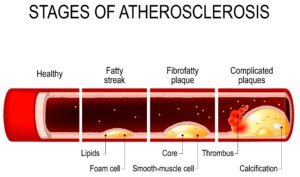
Shutterstock/ Designua
Dr. Santora continues, “This was determined during autopsies on Korean War Vets. We usually do not do EBCT scans on men younger than 35 or woman younger than 40 since it is unusual to see calcification in the plaque at ages younger than this.”
EBCT is electron beam computed tomography, a type of CAT scan that is used for calcium scoring (and other imaging studies). EBCT emits lower radiation than does the more common 64-slice CAT scanner.
“The radiation is equivalent to 2-3 chest X- rays using EBCT scanners, vs, 10-15 chest X-rays for conventional CT scans,” says Dr. Santora.
“In addition, the radiation beam comes from behind the back, exposing very little radiation to breast and thyroid, using EBCT, whereas the X-ray beam encircles the body when using conventional CT.”
There are exceptions when it comes to getting coronary calcium buildup at an early age, continues Dr. Santora.
He explains, “…dialysis patients, juvenile diabetics who smoke, anabolic steroid abusers, and those with familial hyperlipidemias who have family history of heart attacks in their 30s.” Hyperlipidemia is excess fat in the circulating blood.
• About 75 percent of women age 45 to 49 are found to have a coronary calcium score of zero, meaning no measurable atherosclerosis.
• Over 95 percent of women age 30-34 have a coronary calcium score of zero.
• For men in this age group, it’s close to 90 percent.
• For men under 30 it’s 99 percent.
Dr. Santora says, “Atherosclerosis is a very unusual cause of death in someone under 25 years old.”
This doesn’t mean that young adults and teens have a green light for living on a junk food diet, smoking and avoiding exercise.
A young adult may have a zero coronary calcium score, and thus think he or she can get away with regularly eating heart-harmful foods and not exercising.
But the predictive factor of calcium scoring is short-term (1-3 years), and 10 years down the road, that young adult who feels invincible may end up having a growing problem inside his arteries.

Dr. Santora’s areas of interest include interventional cardiology – coronary stenting; cardiac CT – CT angiography, and coronary calcium screening with EBCT. He is board certified in cardiovascular disease and internal medicine.
 Lorra Garrick has been covering medical, fitness and cybersecurity topics for many years, having written thousands of articles for print magazines and websites, including as a ghostwriter. She’s also a former ACE-certified personal trainer.
Lorra Garrick has been covering medical, fitness and cybersecurity topics for many years, having written thousands of articles for print magazines and websites, including as a ghostwriter. She’s also a former ACE-certified personal trainer.
.







